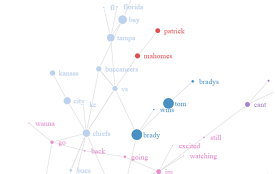
The Best Journaling Methods: Handwritten vs Digital Document vs Online Service

{{formatDate(post.createdAt)}}
{{category.name}}
Throughout history some of the most influential people kept detailed journals, including Leonardo da Vinci, Anne Frank, Charles Darwin, and Thomas Edison. Journals can take a variety of forms from a diary of daily events to creative or artistic outpourings to detailed scientific observations. Keeping a diary or journal has numerous well documented benefits such as reducing stress, getting to know yourself better, cultivating creativity, and improving problem solving. Psychologists promote journaling for these reasons but how do you get started on your own journal?
There are 3 major methods for journaling that we compare to see which is best for you.
Writing by hand on paper: This is how journaling has been done for centuries. Take a pen or pencil, a piece of paper and start writing. A physical document gives you the freedom to be creative in the layout and to be artistic. In addition, some find the feel of a tangible notebook satisfying and more personal.
Typing into a digital document: Similar to a traditional pen and paper diary simply replacing the pen with a keyboard and the paper with Microsoft Word, Google Docs, Notes, or another digital medium. Some prefer typing for its convenience and that your journal can be backed up protecting it against being misplaced or damaged.
Using an online service: This is arguably the most advanced method for keeping a journal that has only recently become possible. Technology enables your journal to be interactive and more interesting by incorporating multimedia. Some online services apply artificial intelligence to make your journal more fun, accessible, and insightful.
Each of these options have their advantages and disadvantages. Let’s examine each in more detail.

![]()

![]()

![]()

Writing By Hand can be Cumbersome
One of the biggest complaints of the pen and paper method is it’s inconvenient. A journal or diary is only useful if it is available when inspiration strikes. Carrying a notebook everywhere can be burdensome and risk damaging or even worse losing your precious journal. The permanent nature of putting pen to paper makes many hesitant to write anything for fear of not getting perfect on the first try with limited options for correcting. This is the reason that I have not been able to consistently keep a handwritten diary. I stare at the blank page in front of me, the pen in my hand, and writer’s block prevents the words from flowing. Most of us spend hours in front of a screen everyday and type faster than we can write which is can be a barrier. On the other hand, writing a journal by hand can be a therapeutic exercise. In the right hands a physical journal can be a work of art.
Typing into a Digital Document is Easier
Writing by hand may stimulate more creativity and allow for more flexibility in layout, but typing is more convenient for most. In my own experience, I have been more likely to consistently type entries into a digital document. Without fear of making mistakes and being able to type quickly frees me to enter an almost meditative state and write in something like a stream of consciousness. The result can be a more natural and authentic window into your thoughts and feelings. A digital document is more readily available as we almost always take our smart phones wherever we go and can quickly type an entry. An entry can easily be edited and with spelling and grammar checks improved. While it is possible to accidentally delete your digital journal, it is easy to keep it backed up to prevent losing your writing. Want to read a previous diary entry about that important event in your life? Instead of flipping through pages of a physical notebook a digital diary can be conveniently searched.






















